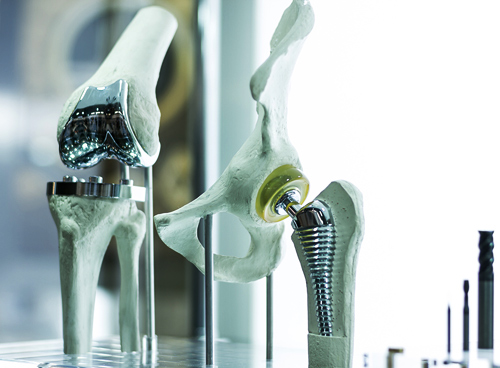Total Hip and Knee Replacement Procedures

When more conservative treatments fail to ease debilitating pain in the hips or knees, surgery may be necessary. UM Joint Network surgeons perform total hip and knee replacement procedures that are tailored to suit the specific health history and needs of the patient.
Hip Replacement
During a total hip replacement, the hip socket is replaced with a metal cup lined in plastic. A ball made of metal or ceramic will then be mounted to the top of the thigh bone, allowing the bone to neatly fit into the new, artificial hip socket.
There are two ways to perform a total hip replacement procedure:
- Traditional Hip Replacement: This approach requires surgeons to make a longer incision along the thigh to access the hip joint, cutting through muscles and tendons. The traditional hip replacement procedure results in more blood loss, more pain, and longer recovery times than the minimally-invasive version of the procedure. UM Joint Network surgeons rarely perform the traditional procedure unless the patient has other factors that complicate minimally-invasive surgery, such as obesity or anatomical abnormalities in the hip.
- Minimally-Invasive Hip Replacement: Also known as muscle-sparing hip replacement, this approach uses smaller incisions in the front or back of the hips. This allows the surgeon to access the hip joint between the muscles, rather than cutting through them. This minimally-invasive approach reduces blood loss and pain, while increasing recovery times.
Knee Replacement
During a total knee replacement, the knee joint is replaced with artificial materials that resurface the area. This removes the painful rubbing that can occur between the upper leg (femur) and lower leg (tibia) when the cartilage at the knee joint breaks down. For a total knee replacement, the knee joint at the femur and tibia is replaced with a combination of metal and plastic.
Get the care that you deserve. Find a UM Joint Network surgeon near you.
